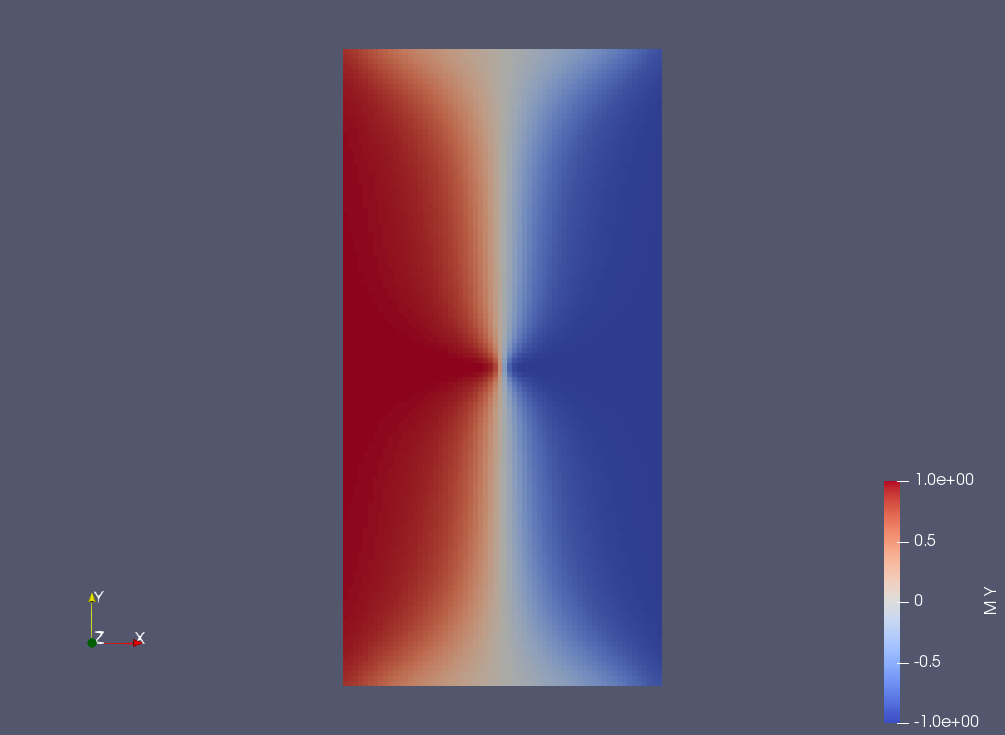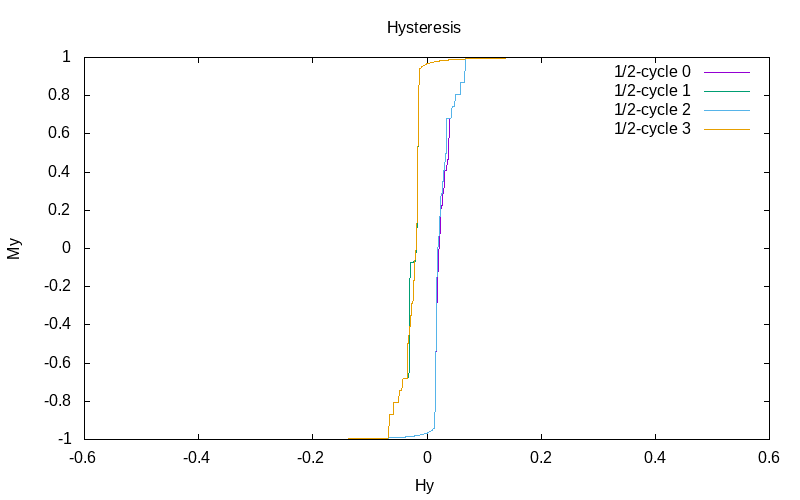The cross tie examples consists in studing a thin sheet of permalloy.
The sheet is rectangular with 0.64 micron of width, 1.28 micron of height & 0.01 micron of length.
The mesh constains 64 cells in X direction, 128 cells in Y direction & 1 cell in Z-direction.
 |
| mesh |
| Ms | Aimantations (A/m) | 1.7e6 |
| K | Anisotropy (J/m^3) | 1.0e5 |
| A | Exchange (J/m^3) | 1.e-11 |
| L | reference length (m) | 1.e-8 |
| L/Le | exchange influence | 4.26 |
The anisotropy direction U1 is uniformly in the Y-direction with uniaxial crystal type The initial magnetism M is oriented in the Y direction in half of the domain and in its opposite in the secund part.
 |
 |
| initial magnetism value along y | main anisotropy direction |
The simulation parameters are:
| relaxation | taylor expansion | |
| time | optimal | |
| relaxation rate | 1.e-8 | |
| toeplitz vector product | LC | |
| L/Le | exchange influence | 4.26 |
The the results are as follow:
The value of magnetism field at equilibrium state are plot as follow:
 |
 |
 |
| equilibrium magnetism value along x | equilibrium magnetism value along y | equilibrium magnetism value along z |
 |
 |
| equilibrium magnetism vector with total magnetism module | equilibrium total magnetic excitation field norm |
In order to vizualize the effect of the diffusion process we have to change the matter data to respect the relation  : The matter parameters are as follow:
: The matter parameters are as follow:
| Ms | Aimantations (A/m) | 1.7e6 |
| K | Anisotropy (J/m^3) | 1.0e5 |
| A | Exchange (J/m^3) | 1.e-9 |
| L | reference length (m) | 1.e-8 |
| L/Le | exchange influence | 1 |
The configurations is as follow:
The value of magnetism field at equilibrium state are plot as follow:
 |
 |
| equilibrium magnetism vector with total magnetism module< | equilibrium total magnetism field norm |
 |
 |
 |
| equilibrium magnetism vector along X at iter 723 | equilibrium magnetism vector along Y at iter 723 | equilibrium magnetism vector along Z at iter 723 |
 |
 |
 |
| 3 hysteresis cycles for elementary circular product | 3 hysteresis cycles for elementary tensor product | 3 hysteresis cycles for RP implementation of elementary tensor product |
PS: to show the field of M apply the filters to field M:
- cellDatatoPointData
- glyph choose vectors to M and select magnitude of H in the viewer
 1.8.13
1.8.13